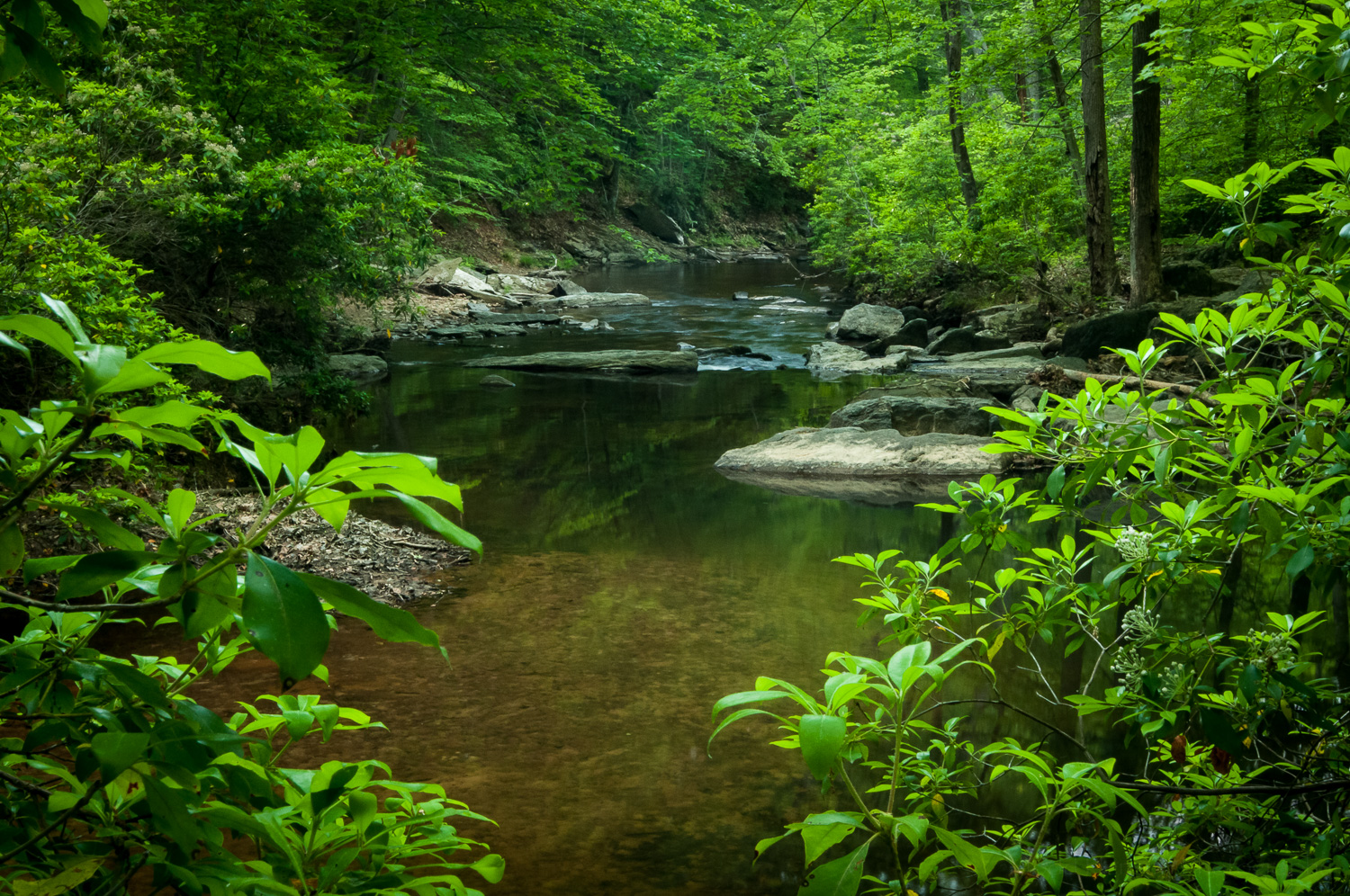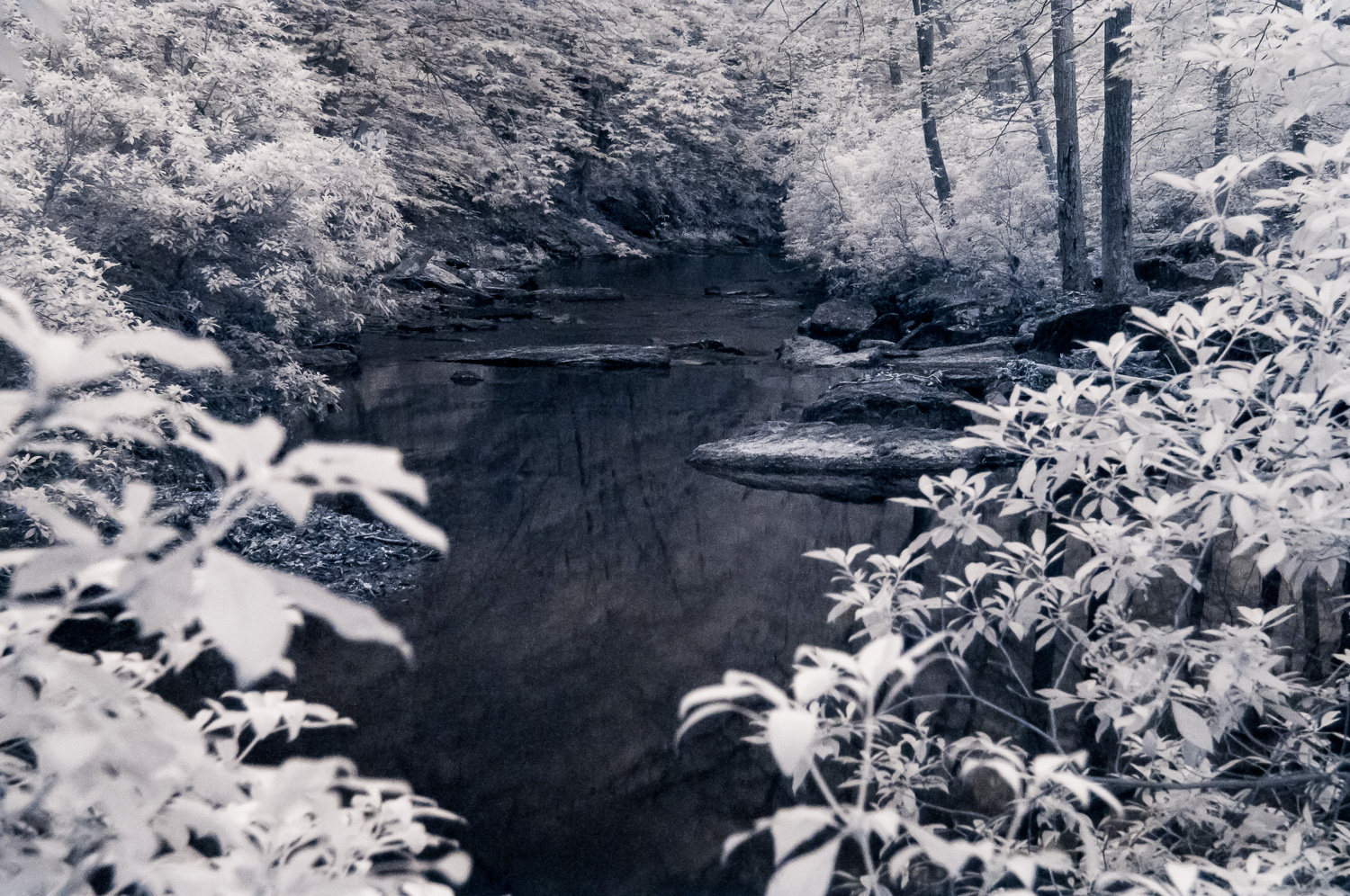Portrait of a Green Frog
I was hiking through Occoquan Bay National Wildlife Refuge on a late April afternoon with a group of friends. We were there to photograph a pair of nesting osprey who had built a nest atop a duck blind in the bay just off one of the trails. It was a great location that provided very good views of the osprey and the nest, and it worked for both morning and afternoon light. Morning light lit up one side of the nest and afternoon light lit up the other.
When we’d finishing photographing the osprey we continued down the trail. These types of locations can be hit or miss, you never really know what you might encounter. Before the osprey nest we’d found a northern black racer snake moving from the brush towards us on the trail. After the osprey nest we watched and photographed a pair of red-breasted merganser diving for fish in the bay. But the next encounter, a lone green frog, is the subject of this story.
We were walking along one of the trails heading back to the parking lot, as it was getting close to the time the gates of the refuge automatically close for the night. The trail splits two wetland areas and runs along marshy terrain. This stretch is often more humid and bug-ridden than some of the other trails, with flying biting bugs and ticks on the grass along the trail. The trail itself is a service road with a patch of grass between the two tire trails. Halfway along this trail we ran into a lone green frog sitting in the middle of one of the tire trails. Honestly, I didn’t even notice the frog. I’d been watching the treeline for birds. But one my friends spotted the frog and started photographing it.
One of the early lessons I learned in wildlife photography is to capture an image early if the shutter sound won’t scare off whatever you’re photographing. This assures you get a shot, even if it’s not the best shot possible. I like to both document wildlife and try to produce the most pleasing photographs I can. So I document first, then take the time to create a pleasing image if the wildlife decides to stick around.
The green frog proved very accommodating. The first photograph I made was from full tripod height looking down on the frog. This was the documentary shot. Even if the frog hopped back into the brush I had an image. I was using a Nikon 200-400mm f/4 lens with a 1.4x teleconverter on a Nikon D300 camera body. With the teleconverter the lens has a focal range of 280-560mm. For the first shot I had the lens zoomed out to 550mm at an aperture of f/8. The ISO was at 500 giving me a shutter speed of 1/100 sec. That’s a little slow for 550mm but the subject was not moving and I was on a tripod.
Green Frog. First attempt, assuring I can at least document having seen the species.
When the frog continued to pose, never moving, I took my camera off the tripod and got down near the ground to try to capture a more pleasing image. Being lower and at less of an angle allowed me to capture more of the frog in focus. I also stopped the aperture down to f/11 and raised the ISO to 640 giving me a shutter speed of 1/80 sec. The photo is still angled slightly askew, but I like the image better than the first one.
Green Frog. Second Attempt. Getting better.
I felt I could still do better. So I lay down on the grass in the middle of the trail and placed my camera and lens on the gravel, as low as they could possibly go. I also inched a little closer to the frog and made sure the frame was level. This put me at 330mm, still at ISO 640 with an aperture of f/8 and a shutter speed now at 1/160 sec. This resulted in the third and final image, the one I’m most pleased with. Being parallel to the frog allowed me to keep most of the frog in focus. Being at the same level as the frog, ground level, allowed me to throw the background completely out of focus which helps the frog really stand out.
Portrait of a Green Frog. Final Image.
Having captured what I felt was a really nice image I put the camera back on the tripod and we all headed towards the parking lot. Remember how I mentioned the bugs along the trail? I was so engrossed in photographing the green frog I never thought to look for ticks in the grass I was laying in. When we reached the parking lot one of my friends stopped me and came over to look at my face. He found a tick right between my eyes. Thankfully, it hadn’t been there long so he was easily able to remove it. I was amazed I hadn’t felt it, but then again, I’ve never felt any of the ticks that’ve bit me.
So when the day was finished I’d had a very enjoyable hike with a group of friends and created at least one photograph I was very happy with. And I was able to learn a couple lessons along the way, which is always a good thing. First off, always check yourself for ticks when returning from a hike. If you can remove the ticks quickly you’re far less likely to contract any of the diseases they can carry. The second lesson was related to the final photograph. If I were to do it again I would likely stop down the aperture a bit more, perhaps to f/11, to try to capture a little more depth of field, giving me more of the frog in focus.
Do you enjoy these posts?
Sign up to receive periodic emails with updates and thoughts. Don’t worry, I won’t spam you. And please consider purchasing artwork or products from my online store, and using my affiliate links in the sidebar to the right when shopping online.
I appreciate your support!










